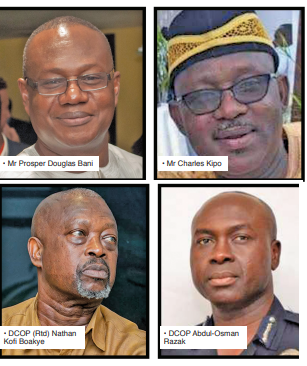In an actively warming world, large-scale wildfires are becoming more common. These wildfires emit black carbon to our atmosphere, one of the most potent short-lived atmospheric warming agents. This is because of its strong sunlight absorption characteristics. But scientists have yet to get a handle on the extent of atmospheric warming caused by black carbon in pyrocumulonimbus (pyroCb) clouds that develop from high-intensity wildfires.
In their most extreme form, these wildfire clouds will inject smoke into the upper troposphere and lower stratosphere where it can linger and impact stratospheric temperatures and composition for several months. Some of the details of that impact have been investigated now thanks to new research from Washington University in St. Louis’ Center for Aerosol Science & Engineering (CASE).
The research was led by Rajan Chakrabarty, a professor in WashU’s McKelvey School of Engineering and his former student Payton Beeler, now a Linus Pauling distinguished post-doctoral fellow at Pacific Northwest National Laboratory. The study was published in Nature Communications.
“This work addresses a key challenge in quantifying black carbon’s radiative effect in the upper atmosphere,” Chakrabarty said.
The team made airborne measurements from within the upper portion of an active pyroCb thunderstorm in Washington state as part of the 2019 NOAA/NASA Fire Influence on Regional to Global Environments and Air Quality (FIREX-AQ) field campaign, he added.
“We considered the full complexity and diversity of the measured back carbon size and morphology on a per-particle basis for accurate estimation of its solar absorption. What we discovered is that a pyroCb black carbon particle absorbs visible sunlight two times as much as a nascent black carbon particle emitted from smaller fires and urban sources,” he said.
The authors uniquely combined measurements of black carbon mass and the thickness of organic coatings on individual particles in the plumes with a detailed single-particle optics model. They used a numerically exact particle-resolved model to calculate the black carbon optical properties and quantified how much light those black carbon particles are absorbing (and thus how much more heat they bring to the upper atmosphere).
In addition, the work highlights the unique light absorption properties of black carbon in pyroCbs clouds versus black carbon from wildfires that does not end up in pyroCbs and black carbon from urban sources.
The next step in this research is to take further measurements and do a more precise study of the black carbon behavior in the stratosphere.
Black carbon injected into the lower stratosphere by recent pyroCb events in Canada and Australia have traveled around the globe, persisted for months, and altered dynamic circulation and radiative forcing across large regions, Chakrabarty noted. These thunderstorms are deemed responsible for 10% to 25% of the black carbon in the present day lower stratosphere, with impacts extending to both the Northern and Southern Hemispheres. Scientists are increasingly observing how much it impacts climate but there is more to learn.
“We need more direct measurements of pyroCb black carbon light absorption measurements to better constrain climate model predictions of stratospheric warming,” Chakrabarty said.
This research has been supported by the National Aeronautics and Space Administration (grant nos. 80NSSC18K1414 and NNH20ZDA001N- ACCDAM), the National Oceanic and Atmospheric Administration (grant no. NA16OAR4310104), the National Science Foundation (grant nos. AGS-1455215 and AGS-1926817), the US Department of Energy (grant no. DE-SC0021011), and the Simons Foundation’s Mathematics and Physical Sciences division. L.F. was supported by the U.S. Department of Energy (DOE) Atmospheric System Research (ASR) program via the Integrated Cloud, Land-Surface, and Aerosol System Study (ICLASS) Science Focus Area. Additional support was provided by the Laboratory Directed Research and Development program (Linus Pauling Distinguished Postdoctoral Fellowship Program). Pacific Northwest National Laboratory is operated for DOE by Battelle Memorial Institute under contract DE-AC05-76RL01830.




















Discussion about this post